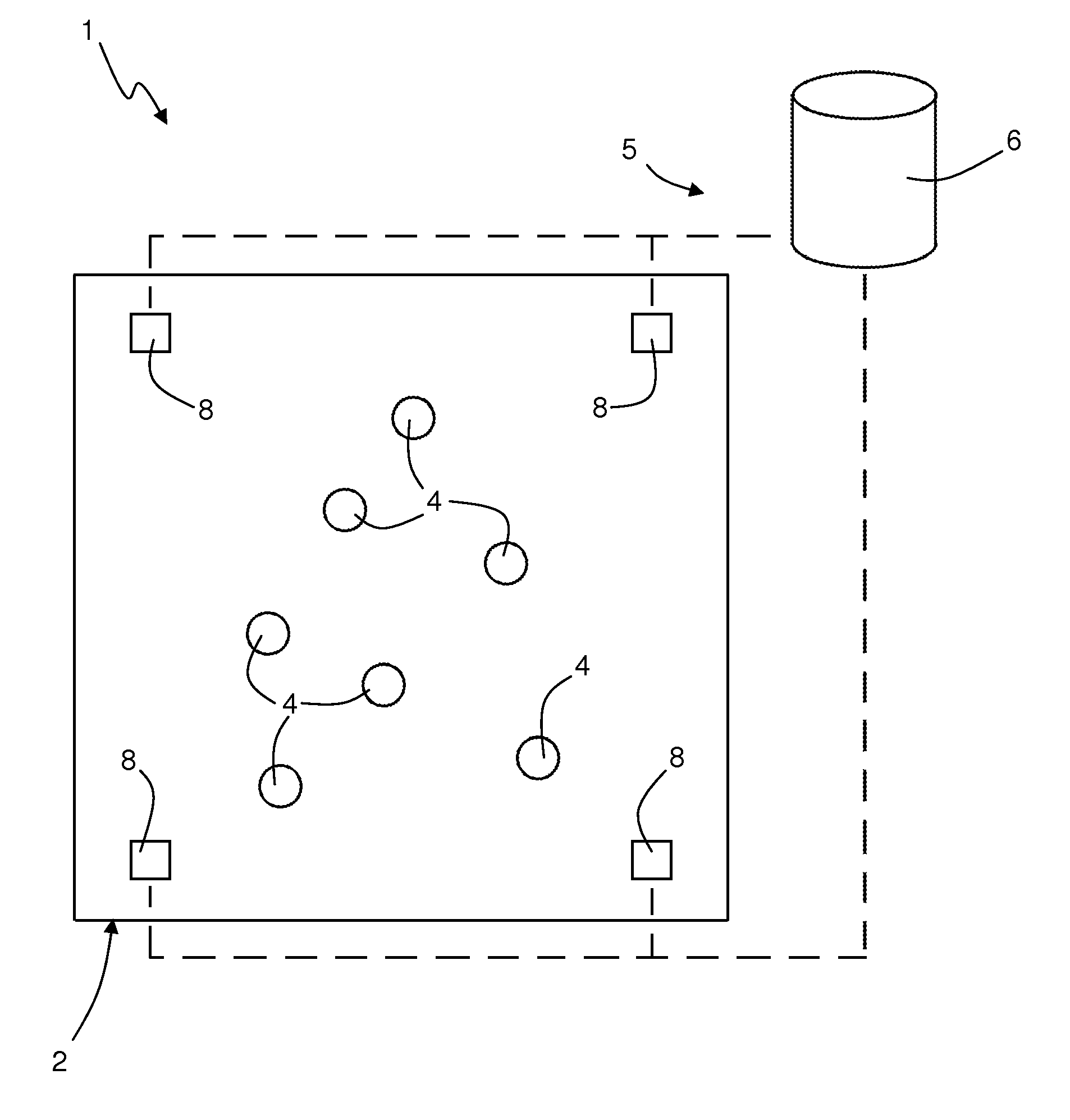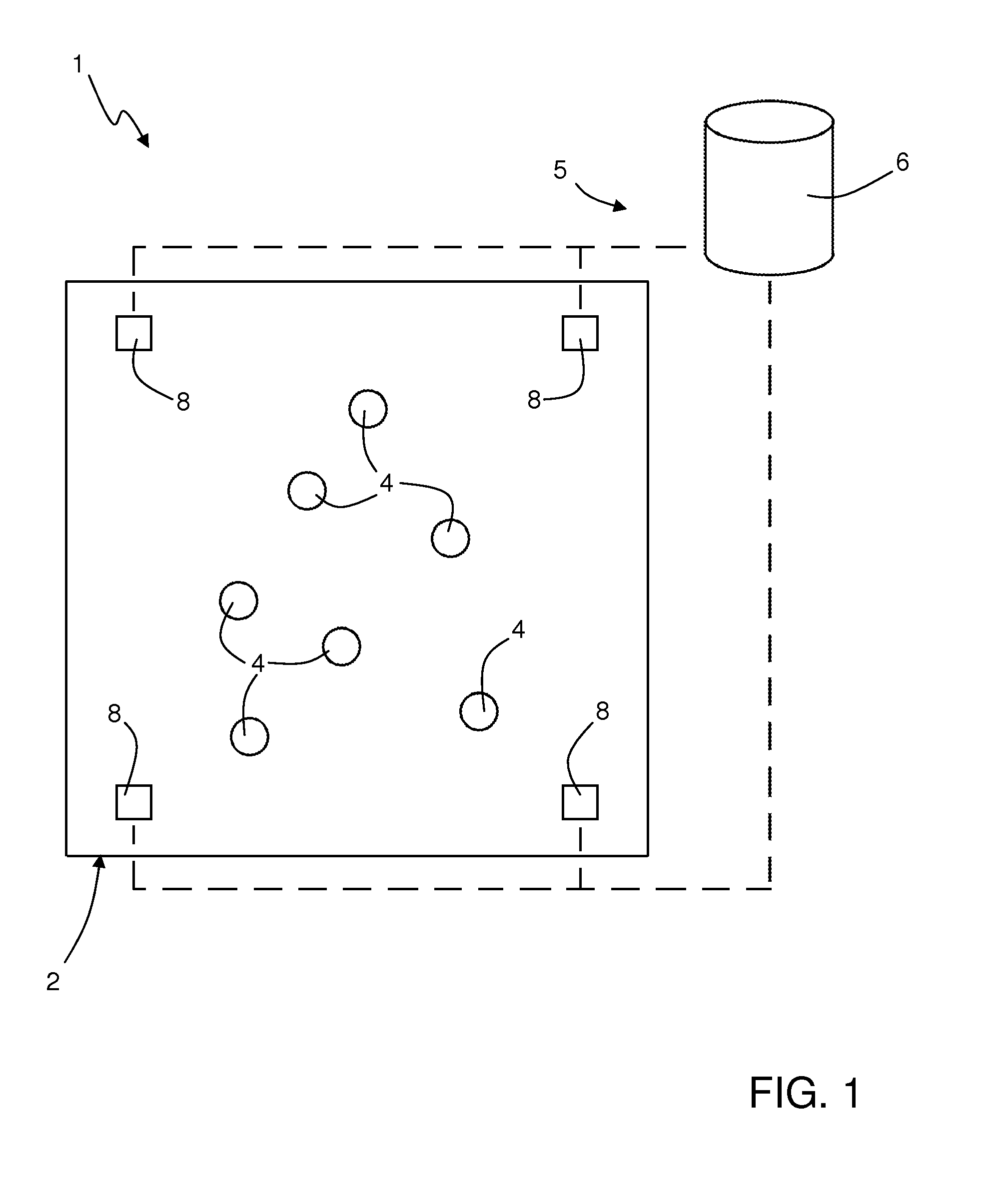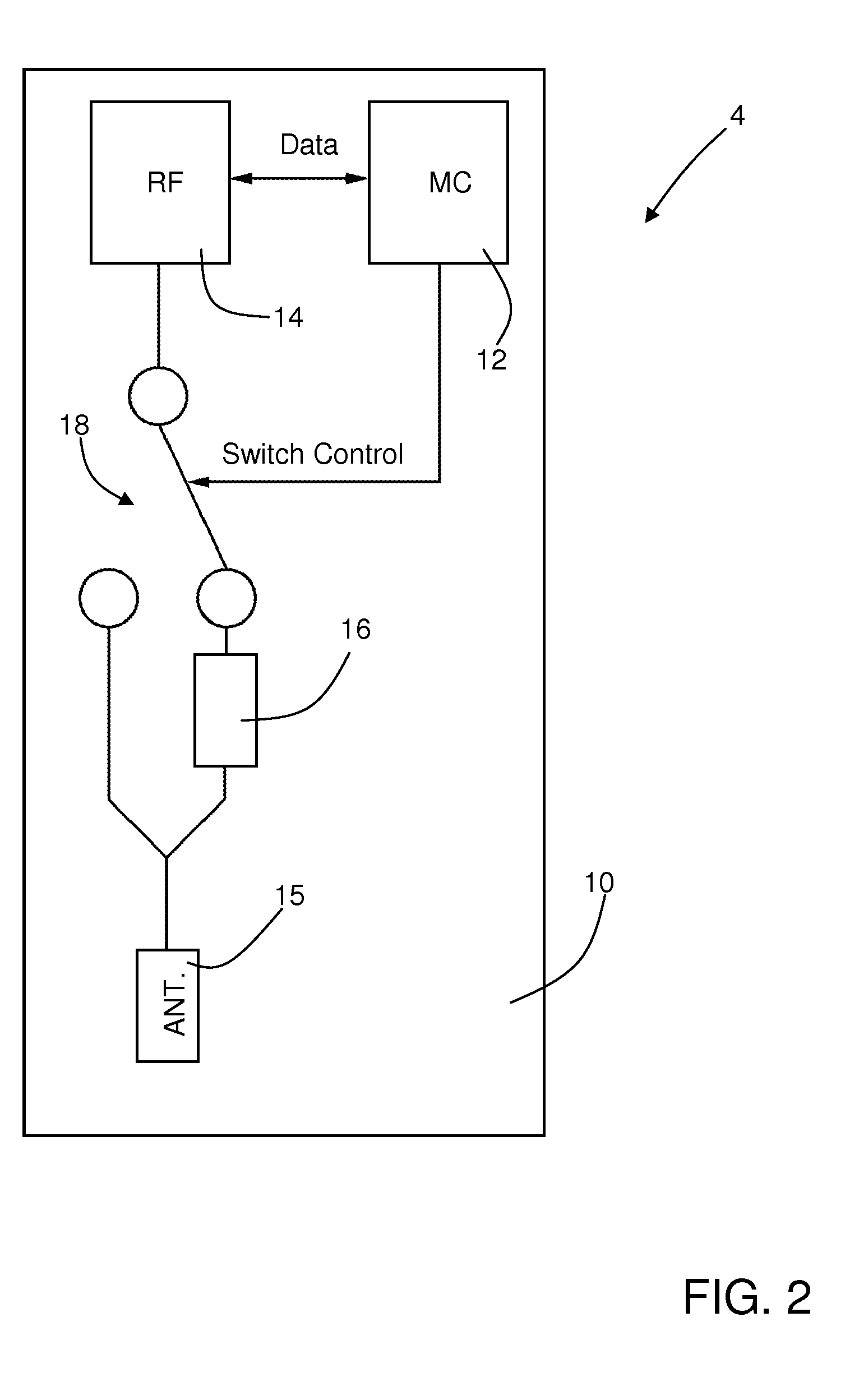Wireless hardware device for detecting relations of distance, and system for monitoring relations of distance between wireless hardware devices
a hardware device and wireless hardware technology, applied in the field of wireless hardware devices, can solve the problems of unsatisfactory spatial and temporal resolution, the inability to obtain representative empirical data on which to build such a characterization, and the inability to achieve reliable information on social interaction phenomena. achieve the effect of improving precision and reliability
- Summary
- Abstract
- Description
- Claims
- Application Information
AI Technical Summary
Benefits of technology
Problems solved by technology
Method used
Image
Examples
Embodiment Construction
[0026]As will be clarified in what follows, one aspect of the present disclosure envisages carrying out monitoring of relations of distance, for example between individuals for monitoring mutual interactions, using wireless hardware devices (for example active RFID tags) configured so as to implement bi-directional communications of data packets, and moreover so as to carry out locally (i.e., on board the devices themselves) processing of the data packets received from surrounding devices in order to obtain information on the relations of distance / proximity with respect to the same surrounding devices. In other words, the wireless hardware devices, instead of acting as simple repeaters that passively emit signals that are to be received by fixed stations (or “readers”) and processed in a centralized way by a fixed data-collection infrastructure (substantially as occurs in some systems of a known type, as the ones cited above), are able to exchange messages in “peer-to-peer” mode to ...
PUM
 Login to View More
Login to View More Abstract
Description
Claims
Application Information
 Login to View More
Login to View More - R&D
- Intellectual Property
- Life Sciences
- Materials
- Tech Scout
- Unparalleled Data Quality
- Higher Quality Content
- 60% Fewer Hallucinations
Browse by: Latest US Patents, China's latest patents, Technical Efficacy Thesaurus, Application Domain, Technology Topic, Popular Technical Reports.
© 2025 PatSnap. All rights reserved.Legal|Privacy policy|Modern Slavery Act Transparency Statement|Sitemap|About US| Contact US: help@patsnap.com



